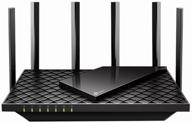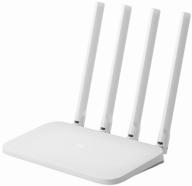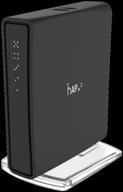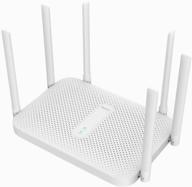
Review on Gigabit Wireless AP RB951G-2HND 💻 Mikrotik with 1000mW Power and 5 Ports by Quc Bnh (MC) ᠌

Great value for the money, definitely recommended!
I was the one who made the discovery for myself that the device can be of such high quality despite its low cost. The older Mikrotiks are starting to come into my line of thought. Thank you very much for reading. Prior to making the purchase, I had the impression that I would get lost in all of the settings and have to fill a great deal of cones before I could get everything to work the way I wanted it to. I was wrong about this. Wrong a lot. After a quick look around, I was able to locate a manual that explains everything in detail. Everything was understandable, readily available, and easily accessible. I did the configuration through winbox on mac os so that in the event that the settings were entered incorrectly, the connection to the router would not be lost, there would always be access to the MAC address of the router, and the router would be searched for on the network itself, which was something that I found to be really convenient. The router itself is nothing more than a minimalist's dream come true; for those who have had their fill of plastic glitters with flashy inscriptions and stickers on the case, this design of the device is one that feels very familiar to me. Permit me to provide you with some information regarding the workings of the device on its own. Before this, the kinetics router of the first revision (firmware V1, towards ndms v2 - tomato) was the epitome of stability and a de facto dust collector as a result of its nonstop operation around the clock. When compared to the Internet distribution veteran in terms of connection speed, Mikrotik emerged victorious. It makes sense, considering how much quicker iron is. In addition, when combined with RouterOS, it is simply flawless. I was able to set up the required services without any difficulty, forwarded the ports, and did not overlook setting up the firewall. Every piece of technology in the house, from the NAS to the tablets, gets excited as it downloads gigabytes. Probably) I liked the fact that there was a sound when I turned the device on and off, similar to the glands of more expensive market segments (the signal is short and pleasant). And, naturally, scalability, in the event that you will need to screw something up in the future. The speed of the processor can be increased to 750 megahertz (though I haven't tested this yet, it should be sufficient). Wai-wai can be set up in any manner that the user desires. In addition, with the assistance of a router, I was able to locate an open signal band and begin broadcasting on it without interfering with the activities of the other people living in the house, as these people informed me. Some cons: Untwisting the label (read - do not buy near the house). This is another point in our favor. Because there are no costs associated with advertising and other related expenses, the price of the product does not go up. It's possible that an inexperienced user who isn't familiar with network issues will run into some difficulties. What is more than compensated for by an established community on the internet, as well as the Quick Set tab in the settings (if necessary), if you require a straightforward configuration process. There is no twisted pair wiring included in the package (you already have that, don't you?).
New products
Comments (0)
Top products in 📶 Wifi Routers
Another interesting products
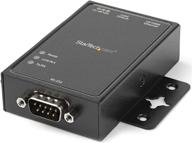
🌐 StarTech.com NETRS2321P: 1-Port RS232 to Ethernet IP Converter, Serial over IP Device Server - Black

5 Review
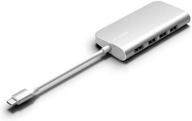
🔌 Juiced Systems Silver BizHUB USB-C Multiport Gigabit HDMI Hub with 3 USB 3.0 Ports, Gigabit Ethernet, 4K HDMI, SD/Micro SD, and USB-C Power Delivery

11 Review
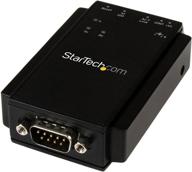
🔌 StarTech.com NETRS232 Serial to IP Ethernet Device Server - DIN Rail Mountable - Serial Device Server - Serial Over IP Device Server (Black)

4 Review
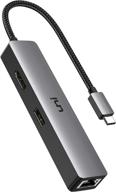
🔌 uni USB C Hub with Ethernet Adapter, 4K HDMI, Gigabit Ethernet, and 3 USB 3.0 Ports for MacBook Pro, iPad Pro, XPS

11 Review


